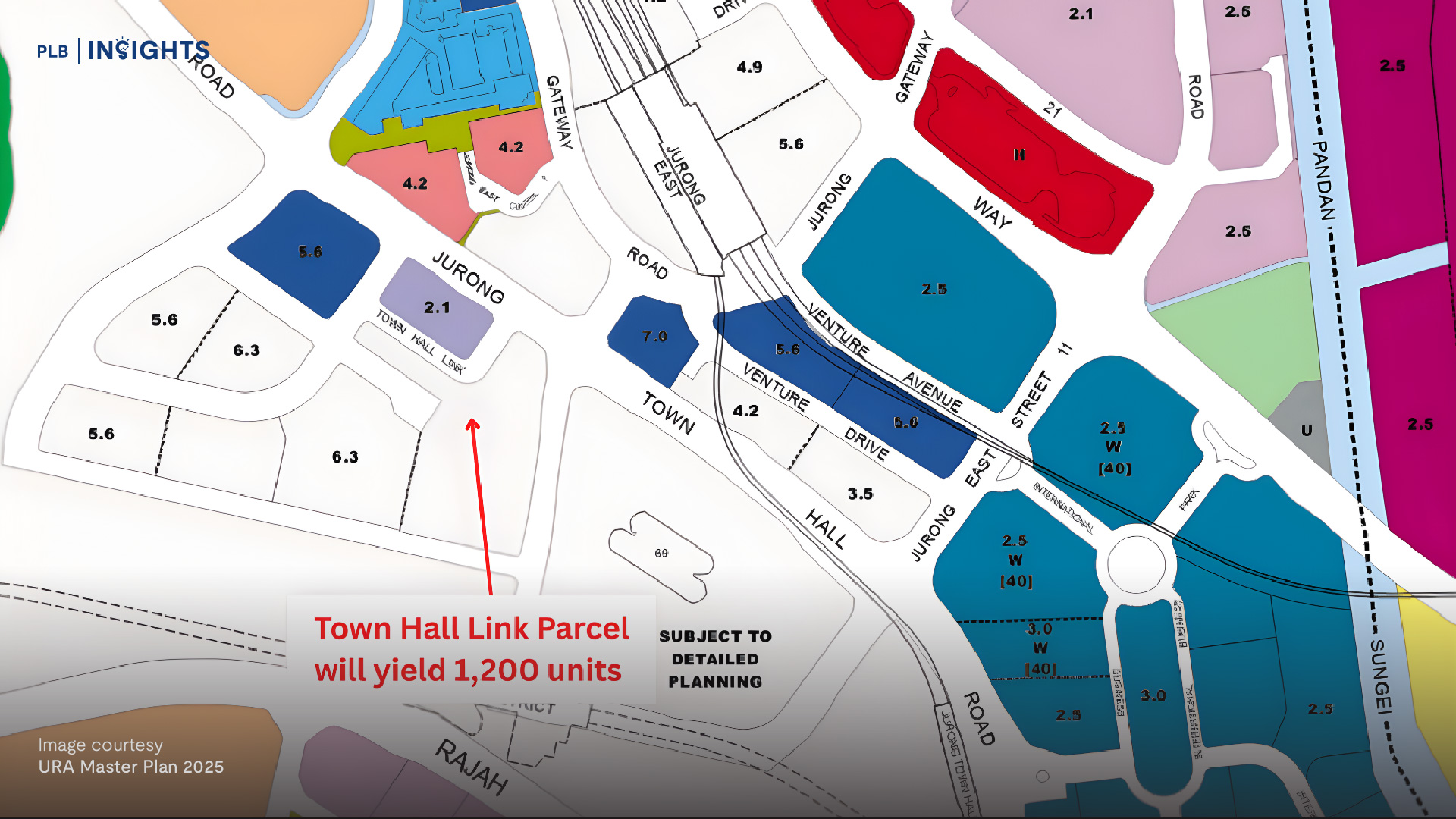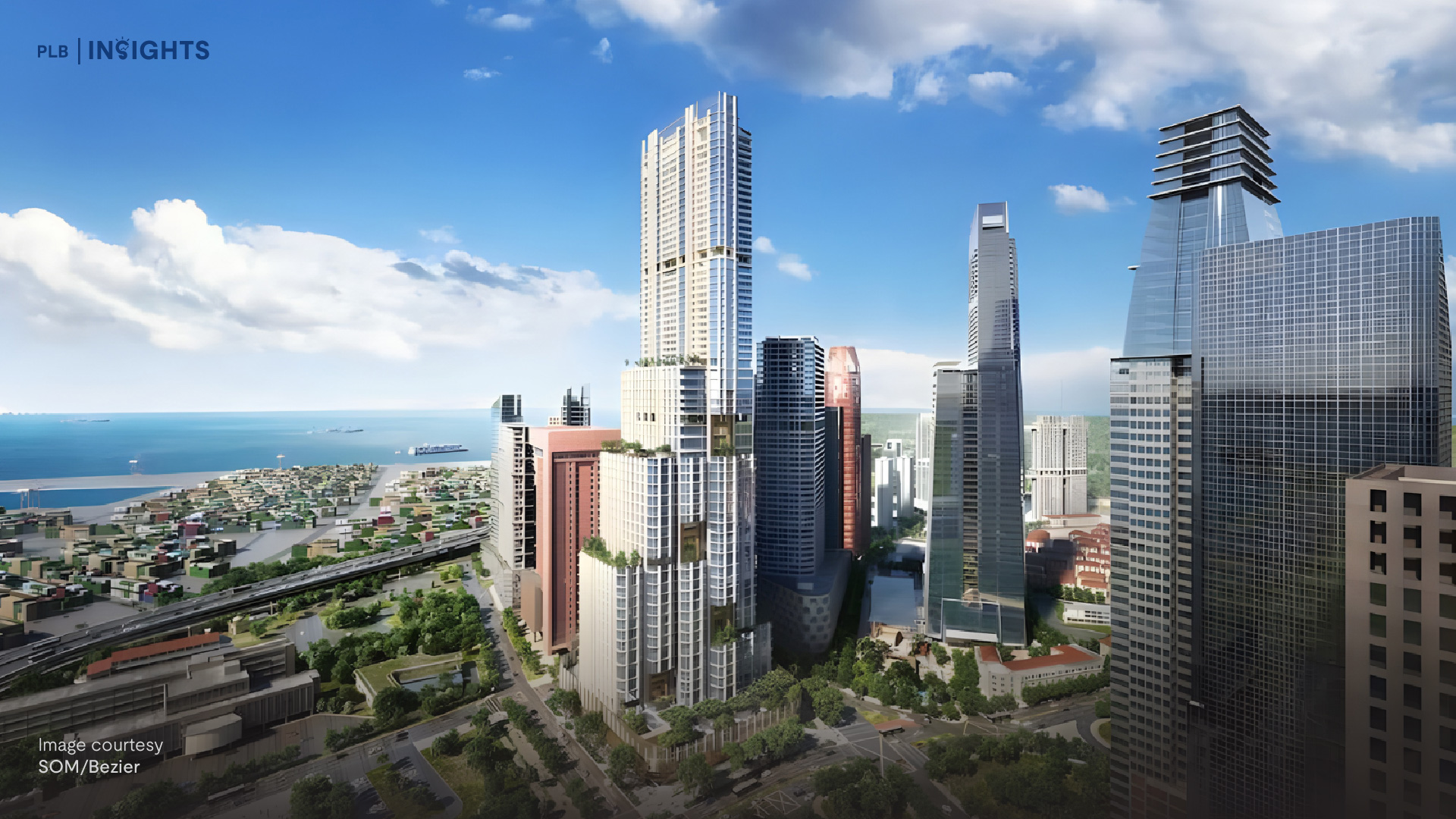
In the realm of urban planning and real estate development, two critical concepts stand at the forefront: Gross Floor Area (GFA) and Plot Ratio. These metrics not only dictate the design and functionality of buildings but also serve as the backbone of regulatory frameworks established by Singapore’s Urban Redevelopment Authority (URA).
With the recent introduction of URA’s harmonisation rule, it has become increasingly important for developers, architects, and investors to grasp the implications of these changes. This article delves into GFA and plot ratio, the specifics of the harmonisation rule, and its broader implications for urban development.
What is Gross Floor Area (GFA)?
Gross Floor Area (GFA) informs you on how intensive a plot of land can be used for developments. It is a fundamental metric in real estate that refers to the total floor area of a building, measured from the outer walls. It encompasses all usable spaces within the building, including residential units, commercial areas, and recreational facilities, as well as common areas such as lobbies, corridors, and service spaces. GFA is crucial for several reasons:

To calculate the GFA of a plot of land, multiply the plot ratio by the site area.

What is Plot Ratio?
Plot ratio measures the relationship between a building’s total GFA and the area of the land on which it is constructed, and indicates how tall a development can be built on the specific plot of land. It is calculated by dividing the GFA by the site area. For example, a plot ratio of 2.0 indicates that for every square metre of land, a developer can construct 2 square metres of GFA. Plot ratio serves several vital functions:

How Do You Read Plot Ratio?
Discerning homebuyers would be familiar with the URA Master Plan and the URA Space platform. The platform allows you to have an overview of the zoning for various land uses, as well as a number allocated to each plot of land. These numbers are known as the plot ratio, or gross plot ratio (GPR).

From the Master Plan above, you may have realised different numbers being allocated across Singapore. As we mentioned earlier, the gross plot ratio guides the development intensity and allows authorities to control the population density in any specific area. One of the ways it achieves this is by restricting the maximum number of storeys for any development built on the land.

A real-life example of how plot ratio is used by the URA is the lower plot ratios for developments near Paya Lebar, Seletar, and Changi. Yes, you guessed it. These three areas house our airbases and airports, and the plot ratios restrict buildings in the area to a lower building height due to airspace restrictions.
URA’s Latest Harmonisation Rule
In a significant update aimed at enhancing clarity and consistency in the real estate market, URA introduced a harmonisation rule that standardises the calculation of GFA across different land-use categories. This reform is intended to simplify processes for developers and ensure equitable treatment across the board, and has taken effect from 1 June 2023.
The harmonisation rule will only apply to development applications that have been submitted to URA on or after 1 June 2023, as well as Government Land Sale (GLS) and industrial Government Land Sale (iGLS) sites launched for sale on or after 1 September 2022.
Key Features of the Harmonisation Rule
Unified Calculation Standards:
The harmonisation rule introduces a standardised methodology for calculating GFA, thereby reducing discrepancies that previously existed among different types of developments. By providing a clear framework, URA aims to ensure that all developers adhere to the same criteria, which enhances transparency in the market.
Exclusions and Inclusions Clarified:
One of the core aspects of the new rule is its clarification on what is included or excluded in GFA calculations. The definitions have been refined to include areas such as mechanical spaces, vertical circulation (like staircases and lifts), and void spaces. By specifying these elements, the URA seeks to ensure a more accurate representation of a building’s usable area, which can have significant implications for project planning.
Impact on Plot Ratio Calculations:
The harmonisation rule brings a greater clarity to GFA calculations, allowing developers to better determine plot ratios. Adjustments to GFA estimates can lead to changes in perceived development potential, prompting developers to reassess their project designs accordingly.
Encouragement of Sustainable Development:
By standardising GFA calculations, URA aims to promote more sustainable land use practices. Developers are encouraged to consider environmental impacts and community needs in their project plans, fostering developments that contribute positively to the urban fabric.
For more information on the harmonisation of floor area definitions, you can refer to URA’s circular here.

Implications for Developers and Investors
The introduction of the harmonisation rule carries several implications for stakeholders in the real estate market:
Greater Clarity in Regulations
With the introduction of unified calculation standards, developers can expect a more straightforward regulatory landscape. This clarity will likely lead to smoother project approvals and a reduction in the time spent navigating complex GFA calculations. Understanding the new definitions will be crucial for successful project planning and execution.
Financial Planning Adjustments
Investors will need to reassess their financial models in light of the new GFA and plot ratio definitions. As these calculations directly impact property valuations, aligning expectations with the latest URA guidelines will be essential for sound investment decisions. Investors should prepare for potential fluctuations in property values resulting from revised GFA figures.
Design Considerations and Architectural Innovation
The harmonisation rule necessitates that architects and planners adapt their designs to comply with the new regulations. This may involve rethinking spatial configurations, optimising layouts, and innovating new design solutions that align with the clarified definitions of GFA and plot ratios.
Developers who embrace these changes as opportunities for creativity may find themselves at an advantage, leading to more efficient and appealing developments that meet modern urban demands.

The Role of Technology in Compliance
As the regulations around GFA and plot ratio evolve, technology plays a crucial role in helping developers ensure compliance. Software solutions for project management and design can now incorporate URA’s latest guidelines, enabling architects and planners to simulate various design scenarios and quickly adjust to regulatory changes.
Building Information Modelling (BIM)
BIM technology allows for precise modelling of building designs, making it easier to calculate GFA and plot ratio accurately. This not only saves time during the design phase but also reduces the risk of errors that could lead to compliance issues later in the project lifecycle.
Data Analytics for Informed Decisions
Data analytics tools can assist developers in understanding market trends, potential return on investment, and the financial implications of the harmonisation rule. By leveraging data-driven insights, developers can make informed decisions that align with URA guidelines and community expectations.

Closing Thoughts
URA’s latest harmonisation rule represents a significant advancement in the calculation of GFA and plot ratio in Singapore. As these concepts form the foundation of urban development, it is crucial for all stakeholders—developers, architects, investors, and urban planners—to become familiar with the updated guidelines.
By embracing these changes, developers can not only ensure compliance but also unlock opportunities for innovation and sustainable design. The harmonisation rule promotes a clearer regulatory landscape, encourages creative architectural solutions, and ultimately contributes to a more efficient and appealing urban environment.
In an era where sustainable urban development is paramount, understanding GFA and plot ratio becomes not just a matter of compliance but a pathway to creating thriving, vibrant communities that meet the needs of current and future generations. As the real estate landscape continues to evolve, staying informed and adaptable will be key to success.
If you have further questions regarding GFA and plot ratio, and how the URA Master Plan can impact your property decisions, feel free to reach out to us here. Our team of experienced consultants will gladly assist in making sense of your exit strategies and navigating the real estate space. See you in the next one!







